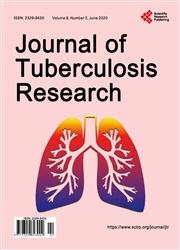Indications, Interpretation and Clinical Consequences of Tuberculin Skin Tests in Resource Limited Settings
引用次数: 0
Abstract
Objective: to evaluate the policy of TST testing in Suriname. As there is no gold standard to diagnose latent tuberculosis infection (LTBI), the tuberculin skin test (TST) is used to diagnose LTBI. However, internationally, the cut-off values of the TST are not uniform and depend on local tuberculosis (TB) epidemiology and guidelines for test initiation. In Suriname, where currently several indications exist for TSTs, cut-off values are set at 5 mm or 10 mm, depending on the age and/or medical history of the patient. LTBI classification is performed by pulmonologists primarily based on the American Thoracic Society targeted TB testing guidelines. Method: retrospective analysis of outpatient TST data between 2011 and 2019 from Suriname’s sole pulmonary medicine clinic. Result: 1373 patients were evaluated. 590 patients were from the screening group of whom 253 had a positive TST result, 46 of whom were classified as LTBI. In the contact tracing group of 649 patients, 616 had a positive TST, 352 of whom were classified as LTBI. In the medical condition group of 134 patients, 96 had a positive TST, 38 of whom were classified as LTBI. Eventually, positive TST results were found for 965 tested patients: 436 patients were classified as LTBI and 529 non-LTBI patients were not prescribed chemoprophylaxis. None of the non-LTBI TST-positive patients were diagnosed with active TB, including 174 patients with a TST result of 15 mm or greater and in need of IPT, but not prescribed by judgement of the pulmonologist or because of loss to follow-up. Conclusion: the overrepresentation of positive TST results in Suriname is attributable to stringent cut-off values, especially among patients who do not disclose TB risk factors. In our opinion the TST cut-off value for such patients in Suriname and other similar settings could be set at 15 mm. We also promote that for all patients with a TST result of 15 mm or greater, offering IPT should be considered (after excluding active TB).在资源有限的环境中结核菌素皮肤试验的适应症、解释和临床后果
目的:评价苏里南TST检测政策。由于目前尚无诊断潜伏性结核感染(LTBI)的金标准,故采用结核菌素皮肤试验(TST)诊断潜伏性结核感染。然而,在国际上,TST的临界值并不统一,而且取决于当地的结核病流行病学和开始检测的指南。在苏里南,目前存在几种TSTs适应症,根据患者的年龄和/或病史,临界值设定为5毫米或10毫米。LTBI的分类主要由肺科医生根据美国胸科学会的靶向结核检测指南进行。方法:回顾性分析苏里南唯一肺内科门诊2011 - 2019年的TST数据。结果:共评估1373例患者。筛查组590例患者,其中253例TST阳性,其中46例为LTBI。649例接触者追踪组中,TST阳性616例,其中LTBI 352例。医疗状况组134例患者中,96例TST阳性,其中38例为LTBI。最终,965名患者的TST结果呈阳性:436名患者被归类为LTBI, 529名非LTBI患者未开化学预防处方。所有非ltbi TST阳性患者均未被诊断为活动性结核病,其中包括174例TST结果为15mm或更大且需要IPT的患者,但由于肺部医生的判断或缺乏随访而未开处方。结论:苏里南TST阳性结果的过度代表可归因于严格的临界值,特别是在未披露结核病危险因素的患者中。我们认为,苏里南和其他类似国家的此类患者的TST临界值可设为15毫米。我们还建议,对于所有TST结果大于等于15mm的患者,应考虑提供IPT(在排除活动性结核病后)。
本文章由计算机程序翻译,如有差异,请以英文原文为准。
求助全文
约1分钟内获得全文
求助全文

 求助内容:
求助内容: 应助结果提醒方式:
应助结果提醒方式:


